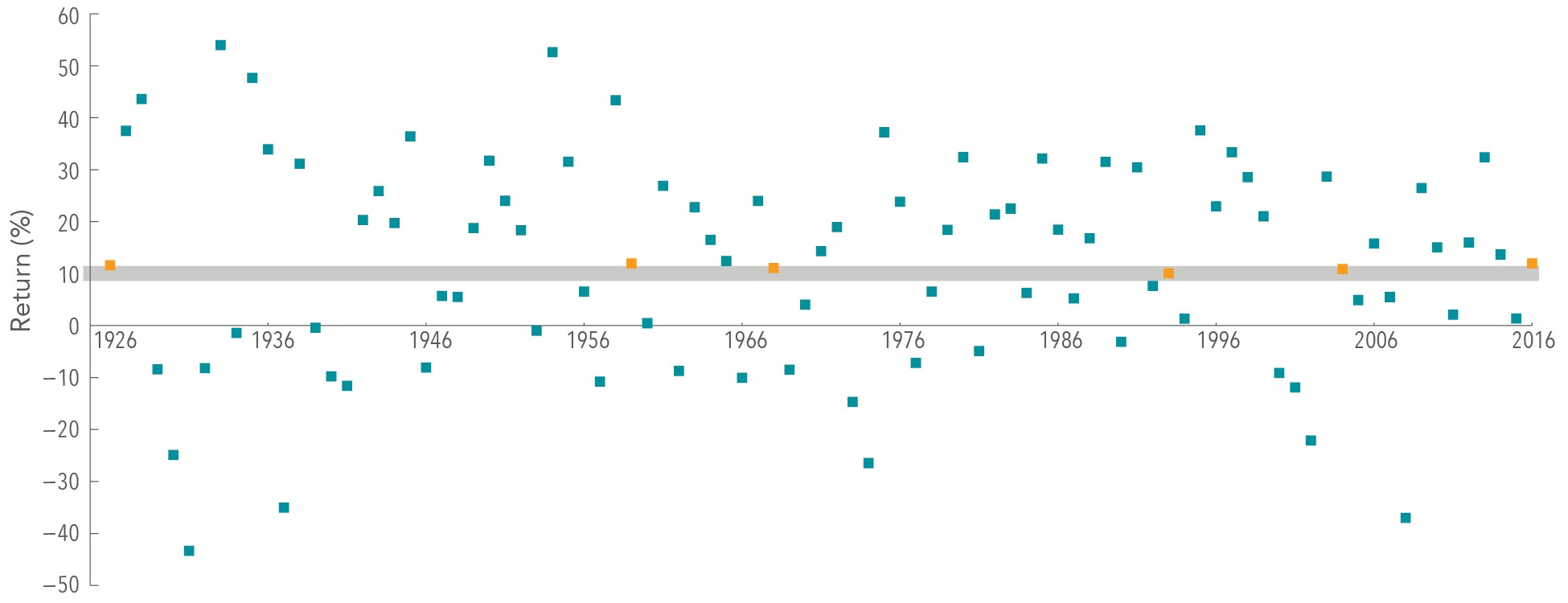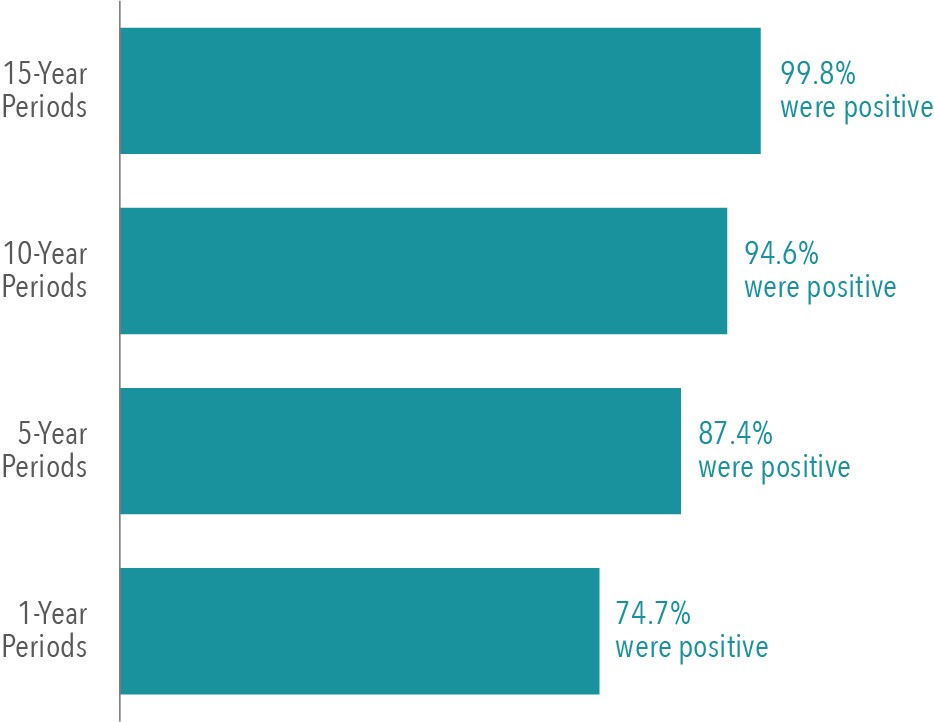Understanding ‘Average’ Returns
The US stock market has delivered an average annual return of around 10% since 1926.[1] But short-term results may vary, and in any given period stock returns can be positive, negative, or flat. When setting expectations, it’s helpful to see the range of outcomes experienced by investors historically. For example, how often have the stock market’s annual returns actually aligned with its long-term average?
The image below shows calendar year returns for the S&P 500 Index since 1926. The shaded band marks the historical average of 10%, plus or minus 2 percentage points. The S&P 500 had a return within this range in only six of the past 91 calendar years. In most years the index’s return was outside of the range, often above or below by a wide margin, with no obvious pattern. For investors, this data highlights the importance of looking beyond average returns and being aware of the range of potential outcomes.
S&P 500 Index Annual Returns
1926–2016

In US dollars. The S&P data are provided by Standard & Poor’s Index Services Group. Indices are not available for direct investment; therefore, their performance does not reflect the expenses associated with the management of an actual portfolio. Past performance is not a guarantee of future results. Index returns do not reflect the cost associated with an actual investment.
TUNING IN TO DIFFERENT FREQUENCIES
Despite the year-to-year uncertainty, investors can potentially increase their chances of having a positive outcome by maintaining a long-term focus. The next image, below documents the historical frequency of positive returns over rolling periods of one, five, 10, and 15 years in the US market. The data shows that, while positive performance is never assured, investors’ odds improve over longer time horizons.
Frequency of Positive Returns in the S&P 500 Index
Overlapping Periods: 1926–2016

From January 1926–December 2016 there are 913 overlapping 15-year periods, 973 overlapping 10-year periods, 1,033 overlapping 5-year periods, and 1,081 overlapping 1-year periods. The first period starts in January 1926, the second period starts in February 1926, the third in March 1926, and so on. In US dollars. The S&P data are provided by Standard & Poor’s Index Services Group. Indices are not available for direct investment; therefore, their performance does not reflect the expenses associated with the management of an actual portfolio. Past performance is not an indication of future results.
Conclusion
While some investors might find it easy to stay the course in years with above average returns, periods of disappointing results may test an investor’s faith in equity markets. Being aware of the range of potential outcomes can help investors remain disciplined, which in the long term can increase the odds of a successful investment experience. What can help investors endure the ups and downs? While there is no silver bullet, having an understanding of how markets work and trusting market prices are good starting points. An asset allocation that aligns with personal risk tolerances and investment goals is also valuable. Finally, a trusted advisor can play a critical role in helping investors sort through these and other issues – as well as keeping you focused on your long‑term goals.
[1]. As measured by the S&P 500 Index from 1926–2016.
Source: Dimensional Fund Advisors LP. There is no guarantee investment strategies will be successful. Investing involves risks including possible loss of principal. Diversification does not eliminate the risk of market loss. All expressions of opinion are subject to change. This article is distributed for informational purposes, and it is not to be construed as an offer, solicitation, recommendation, or endorsement of any particular security, products, or services.

Posted by:










